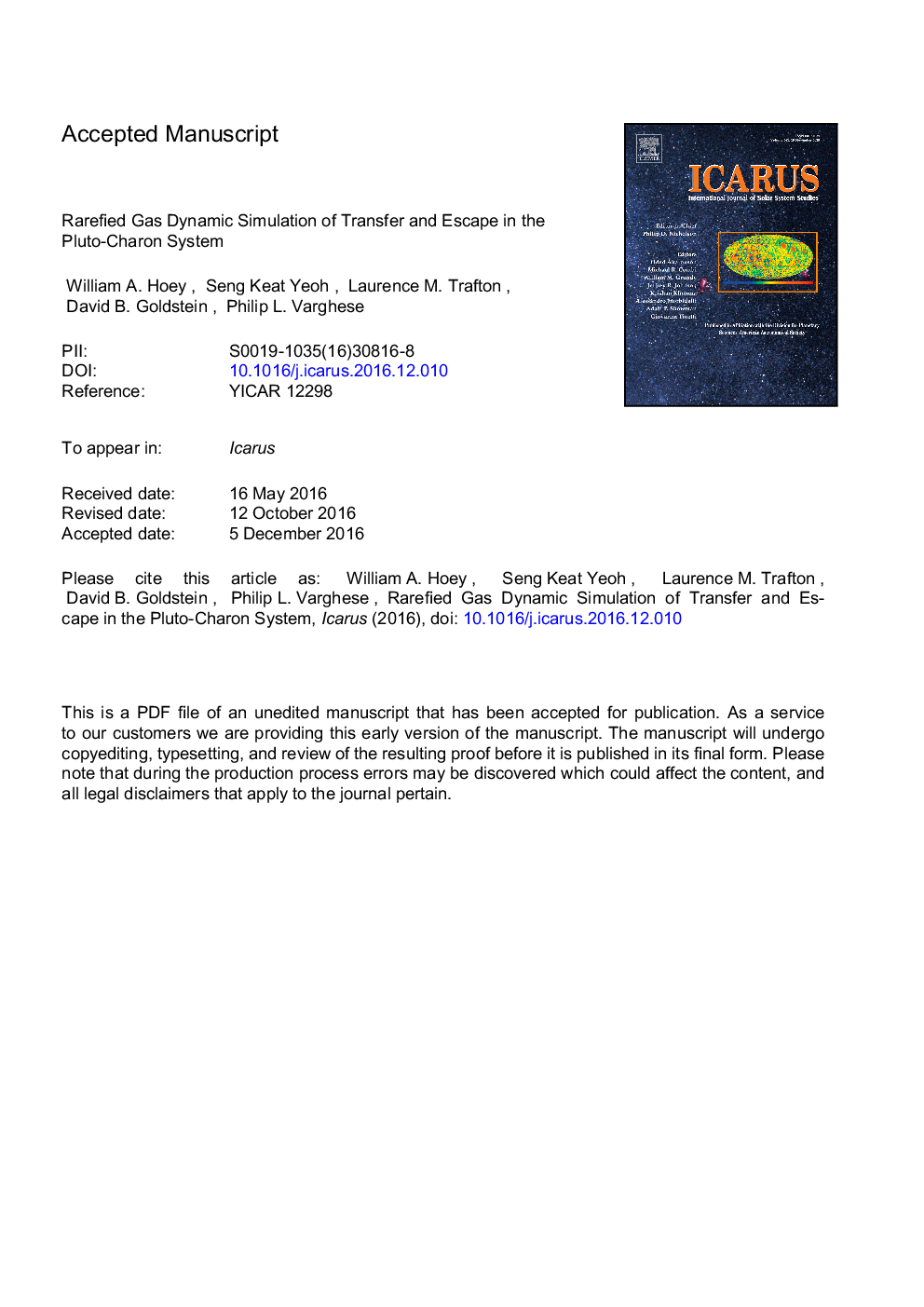| Article ID | Journal | Published Year | Pages | File Type |
|---|---|---|---|---|
| 5487357 | Icarus | 2017 | 34 Pages |
Abstract
We find results consistent with the NH-determined escape rate, upper atmospheric temperature, and lack of a detectable Charon atmosphere. Gas-transfer structures are noted in a binary atmospheric configuration, including preferential deposition of material from Pluto's escaping atmosphere onto Charon's leading hemisphere that peaks at 315° E on the equator. As the moon gravitationally focuses incident flow, a high density structure forms in its wake. If molecules are permitted to escape from Charon in diffuse reflections from its surface, a returning flux forms to Pluto's exobase, preferentially directed toward its trailing hemisphere. Charon is capable of supporting a thin atmosphere at column densities as high as 1.5âà1017 mâ2 in simulations with a plutonian exobase condition similar to the NH encounter. Results computed from a fit to the NH encounter exobase (Gladstone et al., 2016) predict a system escape rate of 7âà1025 CH4 sâ1 in close agreement with those reported by NH (Bagenal et al., 2016; Gladstone et al., 2016), and a net depositional flux to Charon of 2âà1024 sâ1, of which â¼98% is methane.
Related Topics
Physical Sciences and Engineering
Earth and Planetary Sciences
Space and Planetary Science
Authors
William A. Hoey, Seng Keat Yeoh, Laurence M. Trafton, David B. Goldstein, Philip L. Varghese,
